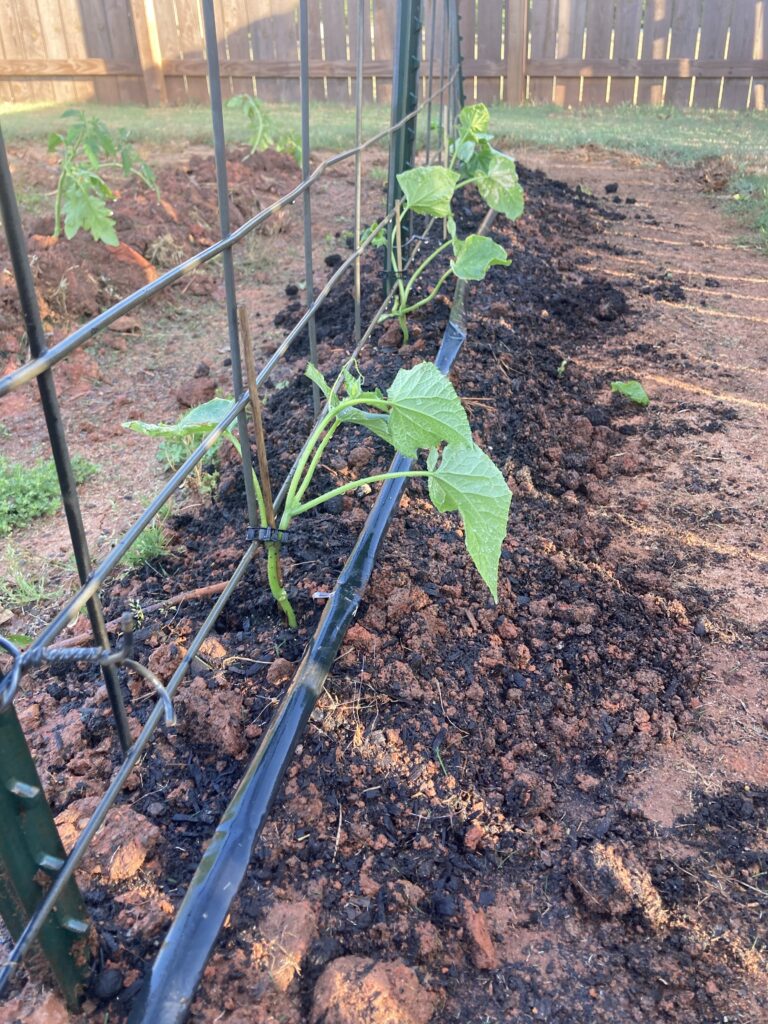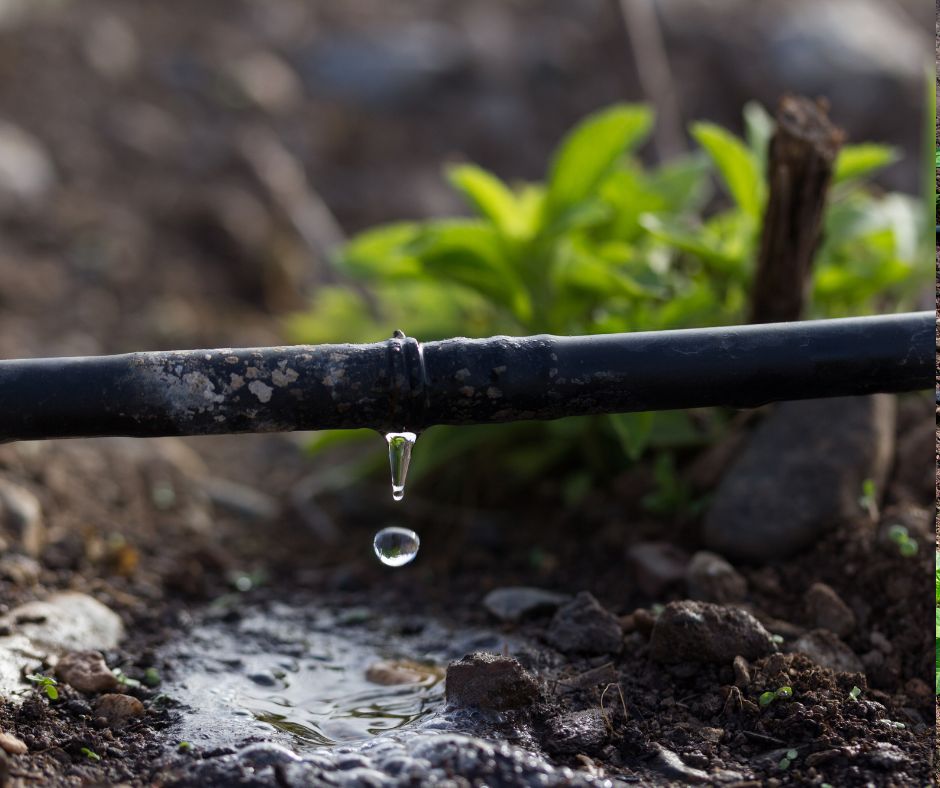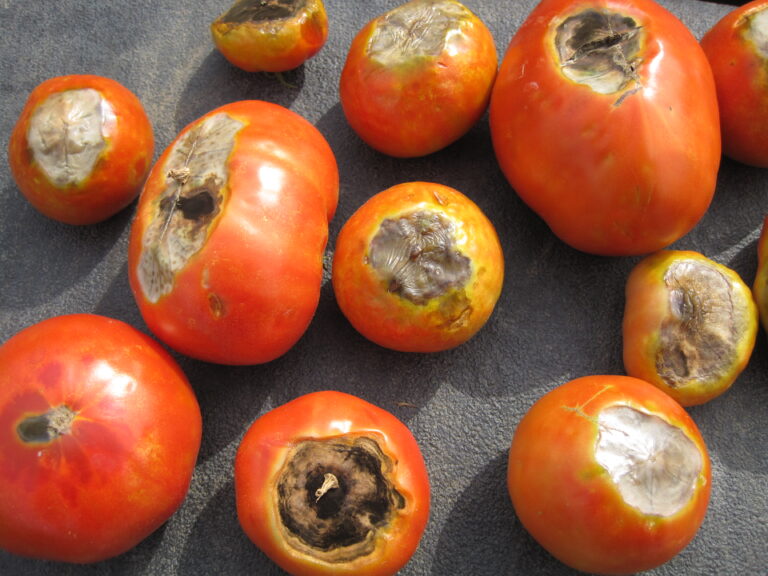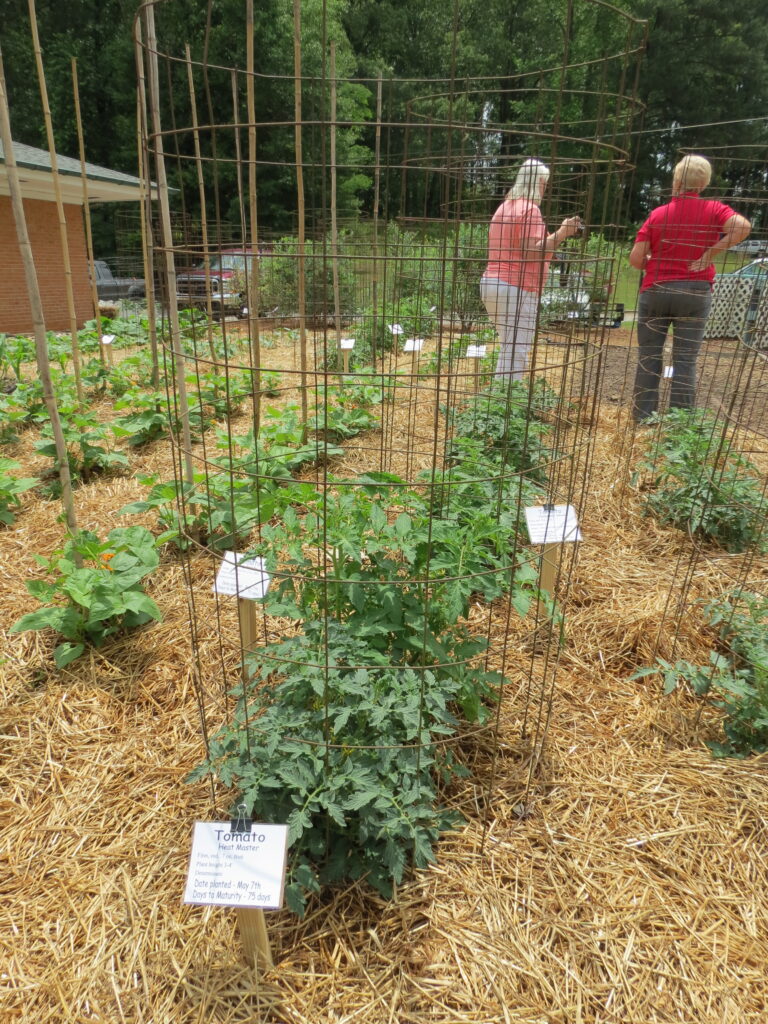Perhaps no vegetable is quite as popular as the home-grown tomato. There is no comparison between one that has been freshly picked off the vine in the home garden, versus one from the grocery store.
In order to achieve that prized, plump, ruby red culinary delight, we must understand some basic requirements of the plant. Sunlight, fertilizer, and water are the essentials to help ensure a successful crop. As we get into the warmer months of late spring and early summer, all of our vegetable plants will require more care and the demand for moisture will be greater. There’s also the matter of proper cultivar selection, soil preparation and cultural practices to prevent disease and insects.
By far, though, most tomato problems are related either directly or indirectly to moisture issues. Good irrigation practices will help your tomatoes survive the heat of summer.


A tomato is made up of approximately 95% water, so from the start water must be pretty important. Even though it is essential for tomato health, water can also be the downfall of a successful tomato harvest. Too much water can certainly injure a plant, causing root malfunctions and possible onset of disease. Too little moisture, especially at the time of fruiting, can lead to wilting, stress, and nutritional deficiencies. Indeed, the association between water and disease, nutritional problems, poor pollination, and other disorders is closely related.
Consider blossom end rot in tomato. It’s a fairly common problem encountered by home gardeners. The flower side of the tomato, or the blossom end, turns black and rots, usually as the tomato begins to mature. While often thought to be a disease caused by a pathogen, this disorder is actually caused by a deficiency in calcium causing the cell walls to break down. Simply adding calcium through sprays or dolomitic limestone may sound like the easy answer, but actually, it’s more easily controlled by managing moisture stress as those tomatoes develop.

As a tomato is maturing, it has a tremendous need for moisture to form up the fruit. Calcium is important in this process and relies even soil moisture for it to be taken up into the plant and moved into the developing fruit. If the plant does not receive adequate moisture, the plant cannot pull calcium into the plant, regardless of how much calcium is sitting in the soil. Water management, therefore, is the key to controlling blossom-end rot. More often than not, there is an adequate amount of calcium already available in the soil, but there isn’t enough moisture for the plant to take it up.
A good strategy for preventing blossom-end rot is to keep the soil evenly moist. Infrequent, deep watering is much better than applying a little bit of water all the time. You want the plant to establish a strong, deep root system to help survive the extremes. Provide enough water to wet the soil to a depth of six to eight inches. It also helps to plant the tomato deep from the start, as roots will form all along the tomato. Tomatoes are unique in that they will grow roots right out of the stem, so planting deeply will encourage a strong water efficient root system.
Soil can certainly make a difference, especially if tomatoes are grown in the ground or in raised beds or containers. Watch the plants closely. When you see a slight wilt in the plants, add water. During hot summers, this may mean watering two to three times a week. Watering this frequently increases the risk of root rot, more so in heavier clay soils than well drained, amended raised beds. In heavier clay soils, you may only need to water once a week, especially if there is rainfall.
When you do water, keep the foliage dry. This will greatly reduce disease problems. Apply water at the base of the plant and off of any foliage by hand watering with a watering can or hose wand at the base of the plant. If you have quite a few plants, you can use soaker hoses or drip irrigation. This allows you to deliver the moisture precisely to the roots of the plant without wetting the leaves. It also saves water, as it only takes about a fourth as much water compared to watering overhead.

Using mulch around your tomato plants will also reduce the amount of water lost to evaporation. Compost, clean wheat straw, or other organic mulch can be used to conserve moisture, keep soil temperatures cool, and help with weed control. Adding several layers of newspaper under the mulch can increase this benefit. Place irrigation lines right under the mulch so you really don’t even see them, and that water is protected from evaporation by the mulch. Battery-operated water timers help regulate how much water goes out and when it occurs.

Another great way to water tomatoes is to use gallon milk jugs. This works well if you don’t have a lot of plants to water. Simply put several small holes in the bottom of the milk container and then fill them up one to two times a week. Place the jugs next to the plants and allow them to slowly drip down to the root zone of your tomatoes. This helps keep the soil evenly moist.
By practicing good irrigation techniques, you can keep your soil moist and greatly reduce the chance of your tomatoes developing blossom-end rot. The same irrigation practices that help you ensure adequate soil moisture also help keep plant leaves and stems dry, reducing the risk of other diseases. Together, these efforts help to ensure a great summer tomato harvest.